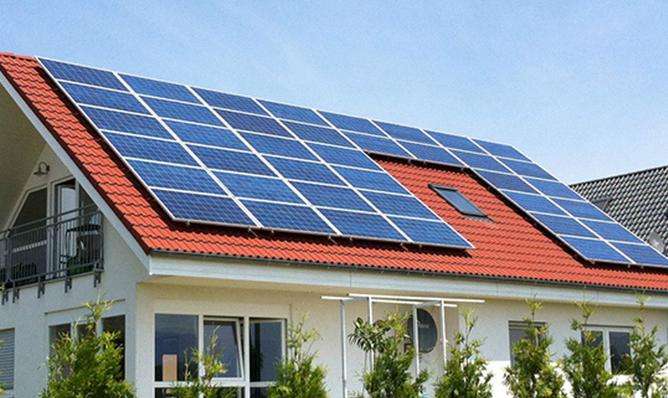CECEP and Keyu Electric Co., Ltd. cooperated with Jiangsu Sheyang 20MW tidal photovoltaic power station. It was jointly built by CECEP Solar Technology Co., Ltd. and Jiangsu Zhenfa Solar Technology Co., Ltd. with 80% and 20% Investment, with a total investment of 370 million yuan. Among them, Keyu Electric Co., Ltd. provides intelligent photovoltaic combiner boxes. The power plant project is located under the high-voltage corridor of Lingang Industrial Zone in Sheyang, Jiangsu Province. .It occupies an area of approximately 800 acres of mudflats. The scale of this phase is 20 MWp and is divided into 20 square grid systems. It consists of 18 square array systems with fixed support in polycrystalline silicon, 1 single-axis oblique in monocrystalline silicon. tracking square array system and 1 amorphous thin film battery square array system. Construction began on September 12010. The project plans to complete the entire project by the end of November and connect to the grid for power generation in December.
The construction of the 20MW Sheyang tidal photovoltaic power plant by CECEP Solar Technology Co., Ltd. in Jiangsu is not only in line with the national strategy to build a “resource-saving and environmentally friendly” power plant. company, but also in line with the "Jiangsu Provincial Government" issued in June 2009. The provincial notices on promoting photovoltaic power generation support the requirement to use mudflats to build photovoltaic power stations in the region of Yancheng. The 20MW Sheyang tidal photovoltaic power plant is the first photovoltaic power plant project implemented in eastern China by CECEP and Keyu Electric Co., Ltd. It will receive political support from the government and generate good economic benefits.mics, thus providing ample space for CECEP to develop its photovoltaic energy. Jiangsu industry.
With an operating period of 25 years, it can produce 2,300 kWh of electricity per year, saving 8,983 tons of standard coal and reducing carbon dioxide emissions by 32,246 tons compared to thermal energy production units. The company will establish tourism agriculture and develop fishery products, and build the company into a new green powerhouse integrating green ecology, tourism and science education.
Policies for large-scale agricultural complementary photovoltaic power plants
possible. Land used for photovoltaic industry projects should try to utilize unused land such as barren hills, mudflats and inefficient waste land, and occupy no land or less cultivated land, subject tou compliance with regulations and local laws and regulations, photovoltaic lands. red lines may begin to circulate. At the same time, it is necessary to scientifically select sites, strengthen services and ensure orderly traffic.
Legal Analysis: The “Notice on Further Implementation of Relevant Policies for Distributed Photovoltaic Power Generation” issued by the National Energy Administration mentioned: “ Some abandoned lands, barren mountains, agricultural greenhouses, mudflats, etc. ., if construction of distributed projects with project capacity (not exceeding 20 MW) connected to the grid at a voltage level of 35 kV and below, and the generated energy is consumed in the transformer area at the connection point to the network, local photovoltaic energy A reference policy in terms of electricity prices for the station can be implemented, andElectricity grid companies provide efficient and convenient access services through “green channels” referring to distributed energy sources.
Legal basis: “Law of the People's Republic of China on Promotion of Circular Economy”
Article 2 The term “circular economy” as used in this law is reference to waste reduction. in the processes of production, circulation and consumption. General term for resource quantification, reuse and recovery activities. The term "reduction", as used in this Act, refers to the reduction of resource consumption and waste generation in the processes of production, circulation and consumption. The term "reuse", as used in this Act, refers to the use of waste directly as products or to its continued use as products after repair.tion, renovation or reconditioning.use of the product, or use all or part of the waste as components of other products. The term "recycling", as used in this Act, refers to the direct use of waste as raw materials or the recycling of waste.
Article 3 The development of the circular economy is a major strategy for national economic and social development. It must follow the guidelines of comprehensive planning and rational arrangement, adapting measures to local conditions, focusing on real results and encouraging government. , market orientation, business implementation and public participation.
Article 4 The development of the circular economy must be implemented in accordance with the principle of priority to reduction based on the principle that it is technically feasible, economically reasonable and conducive to the economy ofs resources and environmental protection. In the process of waste reuse and resource utilization, production safety should be ensured, product quality should conform to national standards, and re-pollution should be avoided.














